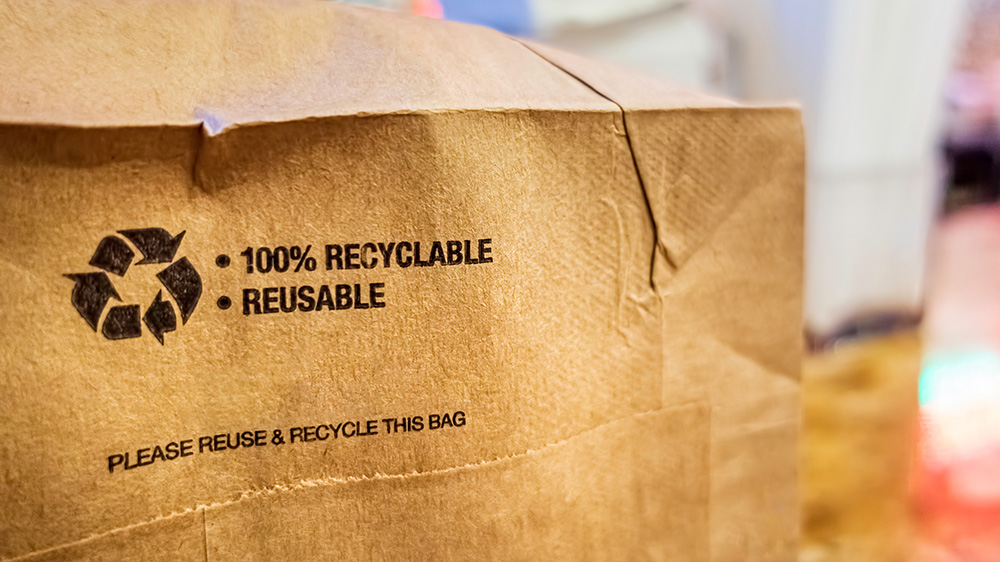The book you ordered online has arrived and now you want to recycle the cardboard box. You take it to local recycling point, but who is actually responsible for organising the recycling facilities and operations? Many people assume that the local municipals are responsible, but in most cases it is actually the company which produced the product. This is called producer responsibility.
“It is common to see producer responsibility for tyres, batteries, consumer electronics and packages,” says Teemu Virtanen, Senior Advisor at Pirkanmaa ELY-Centre. “The companies that produce or import the items are responsible for financing and organising waste management. In practice, companies can’t do it alone, so they use producer organisations.”
UPM takes producer responsibility seriously
UPM is committed to supporting the UN’s Sustainable Development Goals and has identified the goals and respective targets where it can have the biggest positive impact through its operations, products, and solutions, or where it aims to minimise any negative impact. The company considers producer responsibility to be part of the SDG 12, with Responsible consumption and production, that being one of the six chosen UPM´s focus goals. The practicalities of producer responsibility can vary from country to country, so UPM is active in each local system. For example, in Finland UPM is a customer of the Finnish Packaging Recycling organisation RINKI.
“Producer responsibility in Finland is based on national legislation which derives from EU waste legislation. Failure to fulfil these obligations may lead to a fine,” explains Heli Satuli, Communications Manager at RINKI.
She says that the law requires a company to take care of the collection and recycling of all product packaging, such as plastic, carton, glass, metal, or wood packaging. In addition, it must compile yearly reports for the Finnish authorities and educate Finnish customers about how to recycle the materials. RINKI discharges these obligations on behalf of producer organisations.
Recycling is a value stream, not just a cost
Germany also uses producer responsibility organisations (PROs) – nine in total – which are co-owned and operated predominately by waste management companies, but which also include producers and large retailers. The system in Germany is different to the one in Finland as collection is in the responsibility of communities themselves, although they don’t cover the costs.
“The framework is defined slightly differently between countries,” explains Thomas Krauthauf, Vice President of Recovered Paper at UPM. “The main differences are in the role and responsibility of producer responsibility organisations, in the ownership of the organisations, and in the financing system.”
Financing is critical to running the entire recycling system, but we can’t forget that several post-consumer materials are still valuable. There are no fees for recycling graphic paper products in Germany because annual recycling targets have been met for decades and the value of the recovered paper covers the expenses.
“UPM is the largest recycler of graphic paper products in Europe,” Krauthauf says. “We are currently using over 2 million tonnes of it as raw material. Collection systems like those in Finland are organised as zero-cost for communities. Prices for collected material and the financial contribution to communities from PROs in Germany have exceeded collection costs for many years, and therefore have significantly contributed to the collection and disposal of other waste streams as well.”

The EU has recycling rate targets for different materials. The goal is for 75% of paper and cardboard to be recycled by 2025, and 85% by 2030. Photo: Shutterstock
Europe wants big improvements
Producer responsibility is a system that works well, but there is always room for improvement. The EU Packaging and Packaging Waste Directive (PPWD) is currently being revised. The directive aims to ensure a consistent market for packaging in all EU countries and to reduce the amount of packaging waste. The revision of the directive aims to ensure that all packaging solutions are designed so that they are either reusable or recyclable.
“As an example, reusable packaging might be required in some cases,” says Kaisa Herranen, Senior Manager, Product Stewardship at UPM. “There are also new design criteria which limit the type and dimensions of a package.”
Most people have had the frustrating experience of buying a product packed into a box much too large for it. This wasteful practice will be a thing of the past if these new rules come into effect. The EU also has recycling rate targets for different materials. The goal is for 75% of paper and cardboard to be recycled by 2025, and 85% by 2030.
“UPM takes every possible effort to make environmentally sound, easily recyclable products. For example, we are working to ensure adhesives can be washed away from our labels to make packaging easy to recycle.”
Main image: Shutterstock